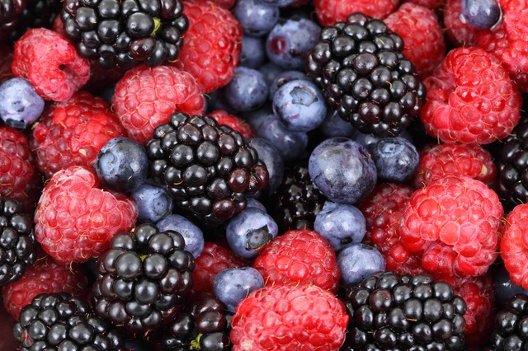Fruit enjoyment in red and green
Whether cherries, berries or grapes - red fruits are always tempting. The reason for this is pointed out by ecological biochemistry, which focuses on the interaction between plants and animals to preserve species in the wild. The cherry, for example, wants to be eaten.
When the bird has eaten the flesh, it disposes of the cherry stone elsewhere and gives it the opportunity to replant itself. But the delicious fruits spoil not only the bird but also us with a valuable nutrient cocktail from different sugars, fruit acids, vitamins, minerals and each quantity of secondary plant materials. Polyphenols is among the latter. A subgroup, the anthocyanins, gives the cherry its red colour. Many of these secondary plant compounds protect the heart, blood vessels and every single cell in the body. Canadian researchers also found that cherries have a uric acid-lowering effect, i.e. they have a preventive effect against gout attacks.
It can also transfer cherries to cherry juice. In it, it packs the fruits of summer in bottles for winter. Not only the rich red and the delicious taste of the fruits remain in it, but also an abundance of health-promoting valuable substances.
Energy centres in green
Chlorophylls form the green of plants. They are also responsible because the plant can produce and grow new carbohydrates from carbon dioxide and water with the energy of the sun. With lettuce or vegetables on the plate, this energy, together with the chlorophyll, benefits us. To keep the green, gentle processing methods are necessary, because chlorophylls are light, heat, alkali and acid labile. They then separate from the magnesium molecule in the compound’s middle and the rich green turns olive brown. When cooking beans, peas, Brussels sprouts or spinach, they often observe these colour changes. Short and high cooking temperatures, such as blanching, ensure better colour retention.
Chlorophyll also releases its magnesium in the gastrointestinal tract. This mineral migrates into the metabolism where it takes over important functions in energy supply for all activities. It excretes the chlorophyll. Before it binds however still existing cancerogen substances and ejects them equal also as a set of cell experiments showed. Chlorophyll has multiple positive effects - and thus lives up to its green colour of hope and confidence.
Author: Brigitte Neumann
imprint data privacy images by www.pixabay.com

